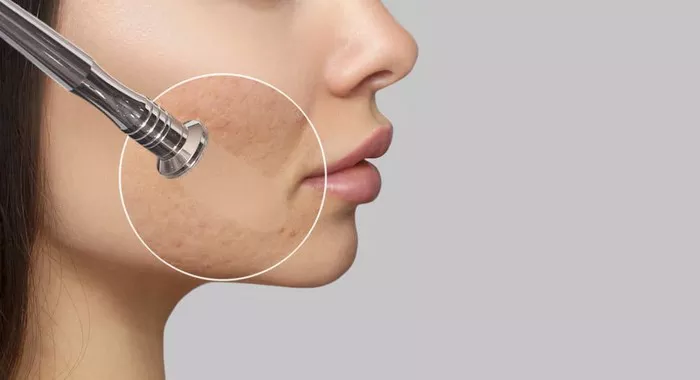The pursuit of clear and radiant skin often finds itself thwarted by the pesky presence of blackheads. These tiny, dark spots, caused by clogged pores, can be a source of frustration for individuals striving for a smooth complexion. In the quest for effective solutions, microdermabrasion emerges as a popular contender. This comprehensive guide unravels the intricacies of blackheads, explores the mechanics of microdermabrasion, and endeavors to answer the pivotal question: Can microdermabrasion help with blackheads?
What Causes Blackheads?
Blackheads, scientifically known as open comedones, are a type of acne lesion that occurs when hair follicles become clogged with oil, dead skin cells, and other debris. The oxidation of this mixture gives blackheads their characteristic dark color. Contributing factors include excessive oil production, the accumulation of dead skin cells, and the presence of Propionibacterium acnes bacteria. Hormonal changes, certain medications, and inadequate skincare practices can exacerbate the formation of blackheads.
What is Microdermabrasion?
Microdermabrasion, a non-invasive cosmetic procedure, is designed to rejuvenate the skin by exfoliating the outermost layer. This mechanical exfoliation is typically achieved through the use of a handheld device that emits tiny crystals or utilizes a diamond-tipped wand to gently abrade the skin’s surface. The procedure aims to remove dead skin cells, unclog pores, and stimulate collagen production, resulting in a smoother and more radiant complexion. Microdermabrasion is renowned for its versatility in addressing various skin concerns, making it a sought-after treatment in the realm of skincare.
How Microdermabrasion Deals With Clogged Pores and Blackheads
Microdermabrasion operates on multiple fronts to address clogged pores and blackheads. Its exfoliating action effectively removes the outer layer of dead skin cells, preventing them from accumulating and contributing to pore blockages. Additionally, the suction mechanism of the microdermabrasion device helps extract impurities from the pores, including excess oil and debris. By promoting a thorough cleansing of the skin’s surface, microdermabrasion sets the stage for a reduction in the occurrence of blackheads.
Can Microdermabrasion Damage Your Skin?
While microdermabrasion is generally considered safe for most skin types, it is essential to be aware of potential risks and side effects. The intensity of the treatment can be adjusted to suit individual skin sensitivities, but excessive pressure or frequent sessions may lead to redness, irritation, and even mild bruising. Individuals with conditions such as rosacea, eczema, or active acne should exercise caution, as microdermabrasion may exacerbate these conditions. Sun protection is crucial post-treatment to shield the newly revealed skin from UV damage.
The Microdermabrasion Process
Step 1: Consultation and Assessment Before embarking on a microdermabrasion journey, a thorough consultation with a skincare professional is essential. This step allows for the assessment of skin type, concerns, and suitability for the procedure. Any pre-existing skin conditions or contraindications are taken into account to ensure a safe and effective treatment.
Step 2: Cleansing and Preparation The skin is cleansed to remove makeup, oils, and impurities. This step sets the stage for optimal treatment penetration and ensures that the microdermabrasion device can operate on a clean canvas.
Step 3: Application of Microdermabrasion The microdermabrasion device is applied to the skin, either emitting crystals or utilizing a diamond-tipped wand. The device exfoliates the outer layer of the epidermis, removing dead skin cells and promoting a rejuvenated appearance.
Step 4: Extraction and Suction Many microdermabrasion devices feature a suction mechanism that aids in the extraction of impurities from the pores. This step is particularly beneficial in addressing clogged pores and blackheads, as it helps dislodge debris and excess oil.
Step 5: Hydration and Post-Treatment Care Following microdermabrasion, the skin may be more receptive to hydration. A soothing and hydrating mask or moisturizer is applied to nourish the skin and enhance its recovery. Sunscreen is essential to protect the treated skin from UV damage.
Final Thoughts
In conclusion, microdermabrasion emerges as a viable option in the ongoing battle against blackheads. Its dual-action approach of exfoliation and suction effectively addresses the factors contributing to clogged pores, making it a valuable tool in achieving a clearer complexion. However, individual responses to microdermabrasion may vary, and the treatment should be approached with a nuanced understanding of skin type and potential risks. As with any skincare procedure, consulting with a qualified professional ensures personalized guidance and optimal outcomes. By embracing the benefits of microdermabrasion, individuals can embark on a journey toward smoother, revitalized skin, bidding farewell to the persistent challenge of blackheads.

